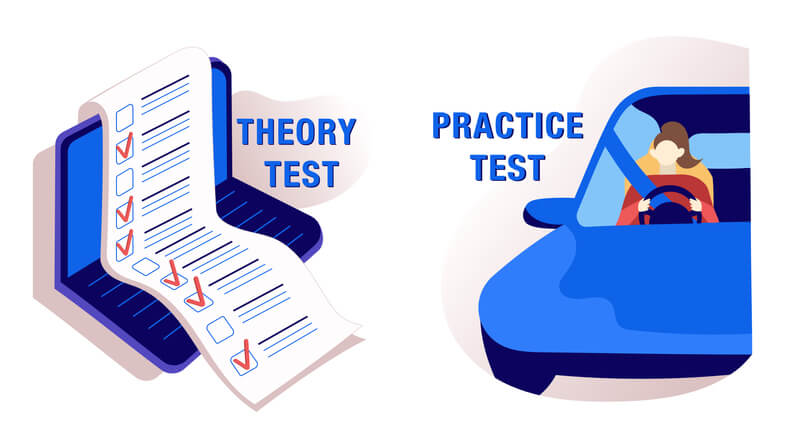Navigating the complexities of the Ohio Bureau of Motor Vehicles (BMV) Point System, or the Ohio license points, can be a daunting task for any driver. Yet, understanding how traffic violation points affect your driving privileges and record is crucial for maintaining a clean driving history and avoiding potential penalties. In this comprehensive guide, we will unravel the intricacies of the Ohio BMV Point System, focusing on Ohio license points, and discuss its impact on your driver’s license, along with strategies for reducing points and maintaining an unblemished driving record.
Ohio License Points at a Glance:

- Ohio BMV assigns points to drivers’ licenses for traffic violations, with minor violations resulting in two-point assessments and serious ones leading to four points.
- Accumulating six or more points can result in license suspension and increased insurance rates.
- Contesting citations in court or taking a remedial driving course are ways of reducing the number of points on an Ohio driver’s record.
Understanding the Ohio BMV Point System
Under the Ohio BMV Point System, drivers’ licenses are assigned points for traffic violations like speeding. Minor violations carry a penalty of two points, serious offenses four points, and severe violations earn six points. Points remain on your driving record for a period of two years, commencing on the date of the violation. Access to your Ohio BMV record is granted to insurance companies, employers, and law enforcement officers.
Understanding the implications of six-point violations is crucial, as they could culminate in a 12-point license suspension and potentially result in your Ohio driver’s license being revoked altogether
Minor Violations and Two-Point Assessments
In Ohio, minor traffic infractions incur a two-point assessment on a driver’s license, which adds traffic violation points to the driver’s record. Examples of minor traffic infractions include:
- crossing the line
- executing an illegal turn
- fleeing
- engaging in drag racing
The two-point assessment signifies that a driver’s record will be allocated two violation points for the occurrence of a particular traffic offense.
These assessments remain on an Ohio driver’s license for two years, and completing an Ohio BMV-approved defensive driving course may help in mitigating a citation and potentially reducing points.
Serious Violations and Four-Point Assessments
In Ohio, a severe traffic infraction, such as exceeding the speed limit, leads to a four-point assessment on the driver’s license. Serious traffic violations can encompass:
- Violation of traffic lanes/lines/safety zone
- Failure to yield right of way
- Criminal offenses such as aggravated vehicular homicide, driving under suspension, and failure to stop after an accident which may involve a law enforcement officer.
The Ohio BMV determines how many points each violation is worth, with four points being assigned according to the severity and potential hazards related to the circumstances of your violation.
Examples of four-point violations include reckless operation and juvenile DUI.
Six-Point Violations and Their Consequences

In Ohio, six-point violations can have serious consequences, including the suspension of the license. Examples of six-point traffic violations include:
• Aggravated vehicular homicide
• Vehicular homicide
• Vehicular manslaughter
• Aggravated vehicular assault
• Vehicular assault
• Failure to stop and disclose identity at the scene of a crash (leaving the scene of an accident)
• Driving under a 12-point suspension
• Reckless operation/reckless driving
A six-point violation can have a considerable impact on your insurance in Ohio. The accumulation of too many points may lead to license suspension, depending on the circumstances, and insurance rates can drastically increase due to the accumulation of points on your driving record.
Six-point violations remain on your driving record in Ohio for two years.
The Impact of Accumulating Points on Your Ohio Driver’s License

Points accumulation on an Ohio driver’s license can lead to the following consequences:
• A warning letter from the Ohio BMV if you accumulate six points within two years, specifying the violations and the respective number of points for each.
• Suspension of your license if you accumulate 12 points, with specific suspension provisions.
• Reinstatement requirements after a suspension.
If you accrue 12 or more points within two years, they face a six-month suspension.
Receiving a Six-Point Warning Letter
Drivers who accumulate six points within two years will receive a warning letter from the Ohio BMV detailing the offenses and their respective points. The warning letter contains a listing of violations with the corresponding point value for each violation and is dispatched to the driver’s registered address. It further comprises reinstatement requirements for a 12-point suspension.
Ignoring the six-point warning letter from the Ohio BMV can lead to a six-month license suspension if 12 or more points are amassed within two years. The six-point warning letter from the Ohio BMV will come through the mail via standard USPS delivery.
Facing a 12-Point License Suspension
Drivers who accumulate 12 or more points on their Ohio license within two years face a six-month suspension. To appeal a 12-point license suspension in Ohio, you must file a petition with the local municipal or county court within 20 days of receiving the suspension letter.
During a 12-point license suspension in Ohio, adhering to several terms and conditions is necessary. These include:
• Dealing with potential license expiration during the suspension period
• Retesting
• Completing a full-day BMV course to recover your license.
• Potential for criminal charges if caught operating a vehicle under suspension.
Reinstating a Suspended License
The process of reinstating a suspended Ohio driver’s license includes the following steps:
1. Serving the suspension period for your suspended Ohio driver’s license
2. Finishing a driving course
3. Securing insurance
4. Passing the exam again
5. Settling fees
To fulfill the suspension, drivers must await the expiration of the suspension period.
To reinstate your suspended Ohio driver’s license, a remedial driving course is required. Obtaining SR-22 insurance involves contacting an insurance company that offers SR-22 filings, which will file the form on your behalf with the Ohio BMV for a fee.
Finally, to reinstate your driver’s license, you will need to:
1. Retake and pass the complete driver’s examination, including both the written knowledge test and the driving skills test.
2. Fulfill other reinstatement requirements, such as paying a reinstatement fee.
3. File a certificate of insurance (SR-22/bond).
Reducing Points on Your Ohio Driving Record

Reducing points on an Ohio driving record can be achieved through taking a remedial driving course or contesting citations in court. Ohio drivers can eradicate two points from their driving record by finishing a BMV-approved defensive driving course.
Drivers may also reduce points on their driving record by contesting citations in court.
Taking a Defensive Driving or Remedial Driving Course
Ohio drivers can remove two points from their driving record by completing a BMV-approved remedial driving instruction course. In Ohio 8-hour defensive driving programs are available in either a classroom or an online setting, designed to fulfill the requirements for license reinstatement and resolve license suspension issues. To be accepted by the Ohio BMV, a defensive driving course must have a minimum duration of eight hours for adult students, a curriculum that is sanctioned by the state, and be taken at an authorized remedial driving school.
The process of enrolling in a BMV-approved remedial driving course in Ohio involves the following steps:
1. Take the course from a certified driver training school or an approved online provider.
2. Complete the course.
3. Present the certificate of completion to the BMV to receive the necessary credits.
Drivers in Ohio are permitted to take the remedial driving course once every three years to reduce points on their driving record.
Contesting Citations in Court
Contesting a citation in court in Ohio can help prevent license suspension and reduce points on a driver’s license. The potential outcomes when contesting a citation in court may include:
• The judge enters a finding of guilty and imposes the sentence
• Entering a plea of no contest
• Entering a plea of not guilty and disputing the facts stated in the complaint
• Providing an explanation before the judge
• Facing court fines as a result of the traffic ticket
An attorney can assist in contesting a citation in Ohio court by:
• Offering legal counsel
• Representing the individual in court
• Constructing a robust defense
• Facilitating the collection of evidence
• Questioning the legitimacy of the citation
• Negotiating with the prosecutor
• Presenting arguments in court to dispute the citation.
Obtaining a Copy of Your Ohio Driving Record

Obtaining a copy of your Ohio driving record can be done through:
• A three-year driving record abstract, which provides a summary of an individual’s driving history for the past three years, including any violations, accidents, and points on the driver’s license
• A two-year unofficial driving record copy
• A complete driving record history
A two-year unofficial driving record copy displays the last two years of a driver’s history. A complete driving record history encompasses information including:
• Traffic violations
• Accidents
• License suspensions
• Points accrued on the driver’s license
• Information about any DUI convictions or other serious offenses.
Three-Year Ohio Driving Record Abstract
In Ohio, you can secure a three-year driving record abstract in person, by mail, or online. To obtain a three-year driving record abstract in person, one may visit any deputy registrar licensing agency. To acquire a three-year driving record abstract by post, one may submit a request by dispatching BMV Form 1173 to the Ohio BMV.
One may request a three-year driving record abstract online in Ohio by visiting the Ohio BMV website and completing the Record Request form, which can be found at the following link: Ohio BMV Online Record Request. A three-year driving record abstract in Ohio contains:
• An individual’s accident reports.
• Moving convictions.
• Any other acts that resulted in their driver’s license points.
Two-Year Unofficial Driving Record Copy
You can request and view a two-year unofficial driving record copy in Ohio online. Here are the steps to follow:
1. Visit the Ohio Bureau of Motor Vehicles (BMV) website.
2. Complete the online request form.
3. Pay the fee of $8.50.
4. Click on the following link to access the online request form: Ohio BMV Website.
A two-year unofficial driving record copy in Ohio typically comprises details such as:
• Moving violation convictions
• Accident involvement reports
• Other actions that resulted in license suspensions, revocations, or disqualifications within the last two years
There is a $5.00 fee for obtaining a two-year unofficial driving record copy in Ohio. The mode of delivery for the two-year unofficial driving record copy in Ohio, when requested online, is through the Ohio Bureau of Motor Vehicle’s online service.
Complete Driving Record History
For a $5.00 fee, you can request a complete driving record history in Ohio via mail, where points remain on the record indefinitely. To request a full driving record history in Ohio through mail, you may fill out and mail the BMV Form 1173 to the Ohio BMV. The procedure for obtaining a complete driving record history in Ohio involves submitting a request either by email or mail and paying a fee of $5.00 per record. You can request your driving record through the Ohio BMV’s online record request portal or by adhering to the instructions provided on the BMV website.
The processing time for the request is typically 14-21 days. Points on the driving record in Ohio remain for two years from the violation date. The complete driving record history in Ohio can take 14 to 21 days to process once requested.
In Conclusion
Understanding Ohio’s BMV Point System and its impact on your driver’s license is crucial for maintaining a clean driving history. By familiarizing yourself with the different types of violations and their corresponding point assessments, being aware of the implications of accumulating points, and learning how to reduce points through remedial driving courses or contesting citations in court, you can become a more responsible and informed driver. With this knowledge, you can better navigate the complexities of the Ohio BMV Point System and protect your driving privileges.
Frequently Asked Questions
How many points can you have on your license in Ohio?
In Ohio, you can receive up to 12 points on your license before it is suspended. The State of Ohio Bureau of Motor Vehicles offers options for reviewing your driving record.
How many points is a hit-and-run in Ohio?
A hit and run in Ohio will cost you six driver’s license points, with a warning letter from the Ohio BMV sent to you. If you acquire another six points within two years, your license and driving privileges will be suspended for six months.
Is there a way to get points off your driving record in Ohio?
In Ohio, drivers can take an approved defensive driving course to have two points removed from their record. You can remove points from your license in this way up to five times throughout a driver’s life and only once every three years.
How many points is a speeding ticket worth in Ohio?
In Ohio, a speeding ticket is worth between 2 to 4 points.
What are the consequences of receiving two points on my Ohio driver’s license?
Receiving two points on your Ohio driver’s license can have serious consequences, as they will remain on your record for two years and could lead to increased insurance rates or the loss of driving privileges.
- Unlock the Details! Learn everything about Texas Driving Records

 Live Chat
Live Chat






